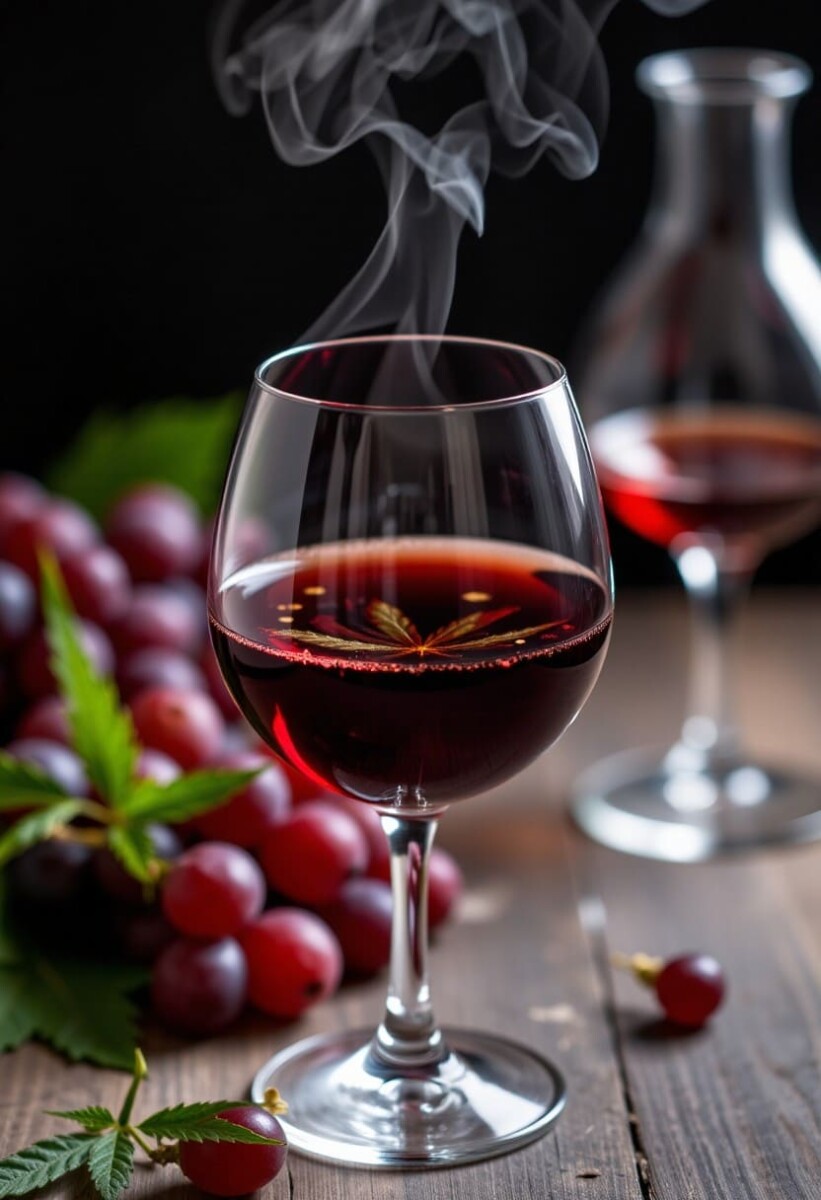The idea of combining the relaxing effects of wine with the unique buzz of cannabis might sound intriguing. While commercially produced cannabis-infused wines are navigating legal landscapes, some enthusiasts are exploring DIY methods. If you’re considering making your own cannabis wine, it’s crucial to understand the process and prioritize safety.
Important Considerations Before You Begin:
- Legality: Cannabis laws vary significantly. Ensure that cannabis possession and infusion are legal in your region.
- Potency Control: Homemade cannabis wine can be unpredictable in potency. Start with small amounts and understand your tolerance.
- The “Crossfade” Effect: Combining alcohol and cannabis can lead to a more intense and sometimes unpleasant experience known as “crossfading.” Be mindful of this if your recipe includes alcohol.
- Onset Time: Like edibles, the effects of cannabis-infused wine can take 30 to 90 minutes to manifest. Be patient and avoid consuming more before the initial dose takes effect.
Two Main Approaches to Cannabis Wine:
There are generally two ways to approach making cannabis wine at home: infusing existing wine with cannabis or fermenting a cannabis-infused base.
Method 1: Infusing Existing Wine
This is the simpler and more common method.
What You’ll Need:
- 1 bottle (750ml) of your favorite wine (red or white)
- 20-25 grams of cannabis flower or trim
- Oven
- Baking tray and parchment paper
- Grinder
- Cheesecloth
- String
- 1-liter Mason jar
Instructions:
- Decarboxylate the Cannabis: This crucial step activates the THC. Preheat your oven to 110°C (230°F). Grind your cannabis coarsely and spread it evenly on a parchment-lined baking tray. Bake for 30-45 minutes, stirring occasionally to ensure even heating. Let it cool completely.
- Infuse the Wine: Pour the wine into the Mason jar. Place the decarboxylated cannabis in the center of a piece of cheesecloth, wrap it up, and secure it with string to create a “tea bag.”
- Steep: Submerge the cannabis “tea bag” in the wine, ensuring it’s fully immersed. Seal the jar tightly.
- Wait: Store the jar in the refrigerator for at least 24 hours, allowing the alcohol to extract the cannabinoids. For a stronger infusion, you can steep for up to 48 hours, tasting periodically.
- Strain and Store: Once the desired potency is reached, remove the cannabis “tea bag” and gently squeeze out any remaining liquid. You can strain the wine through a clean cheesecloth or a fine-mesh sieve to remove any plant particles. Store red cannabis wine in a cool, dark place and white cannabis wine in the refrigerator.
Method 2: Fermenting Cannabis Wine from Scratch (Advanced)
This method is more involved and akin to traditional winemaking, incorporating cannabis into the fermentation process.
What You Might Need:
- Cannabis trim or flower (at least 120 grams or more)
- Fruit (e.g., oranges, lemons)
- Sugar
- Wine yeast
- Water
- Winemaking equipment (demijohn, airlock, etc.)
Instructions:
This process involves several steps, including preparing a must (the juice and other ingredients for fermentation), adding yeast, primary and secondary fermentation, clarification, and bottling. Specific instructions can vary widely depending on the recipe you follow. This method requires careful attention to sanitation and fermentation processes to ensure a safe and palatable final product.
Safety Tips for Consuming Homemade Cannabis Wine:
- Start Low and Go Slow: Begin with a very small serving (e.g., a few sips) to gauge the potency and your reaction. Wait at least two hours before considering more.
- Know Your Tolerance: Understand your sensitivity to both alcohol and cannabis individually before combining them.
- Avoid Mixing with Other Substances: Be cautious about combining cannabis wine with other drugs or medications.
- Don’t Drive or Operate Heavy Machinery: The intoxicating effects of cannabis can impair judgment and motor skills.
- Keep Out of Reach of Children and Pets: Store your cannabis wine securely.
- Label Clearly: Ensure your homemade cannabis wine is clearly labeled to avoid accidental consumption.
A Note on Commercial Products:
Commercially produced cannabis-infused beverages often utilize advanced techniques like nanoemulsions to ensure consistent dosing and water solubility of cannabinoids. These products undergo testing for potency and safety, offering a more reliable experience.
Making cannabis wine at home can be an experimental process. By prioritizing safety, understanding the potential effects, and starting with simple infusion methods, you can explore this unique combination responsibly. Remember to always consume in moderation and be aware of the laws in your area.


